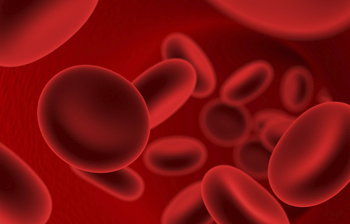Feb 3 2016
Scientists have developed a new approach for the long-term storage of biological tissue and blood samples making blood transfusions easier.

Researchers from the Universities of Sheffield and Warwick have found that using a block copolymer hydrogel, which forms a soft 3D network of nanometer-sized worms in water, prevents damage to red blood cells that have been frozen at low temperatures for long periods of time.
This research has the potential to make blood transfusions easier as blood can normally, only be stored for up to 42 days without using cryopreservation (freezing) techniques.
Freezing red blood cells usually requires the addition of potent cryopreservatives that can have undesirable side-effects, while thawing imposes enormous stresses on the cells.
Freezing is currently the best way to store red blood cells. However, various anti-freeze compounds are normally added to prevent damage during freezing due to ice crystal formation. Removing such additives from cells can be problematic but now scientists have found a promising new synthetic alternative.
The research has the potential to make blood transfusions easier, because blood can normally only be stored for up to 42 days without using cryopreservation (freezing) techniques.
Steve Armes, Professor of Polymer and Colloid Chemistry, at the University of Sheffield said: “Our new material is a biocompatible long-chain molecule that self-assembles in water to give a network of worm-like particles that form a soft gel. This provides a suitable matrix for freezing red blood cells for their long-term storage.
“The most important property is its cryoprotection performance. This is the first demonstration that a wholly synthetic formulation can be used to achieve efficient cryopreservation of red blood cells.”
When used alone, the worm-like particles do not afford any protection, but when used in combination with a second biocompatible polymer that prevents ice crystal formation, then up to two-thirds of the red blood cells survive thawing.
The worm gel not only facilitates cryoprotection of red blood cells, but may also serve as a suitable matrix for tissue engineering.
This suggests an attractive one-pot solution for whole blood cryopreservation and tissue engineering applications.
The study, led by Professor Armes and Professor Matthew Gibson from the University of Warwick, is published in the journal Angewandte Chemie.